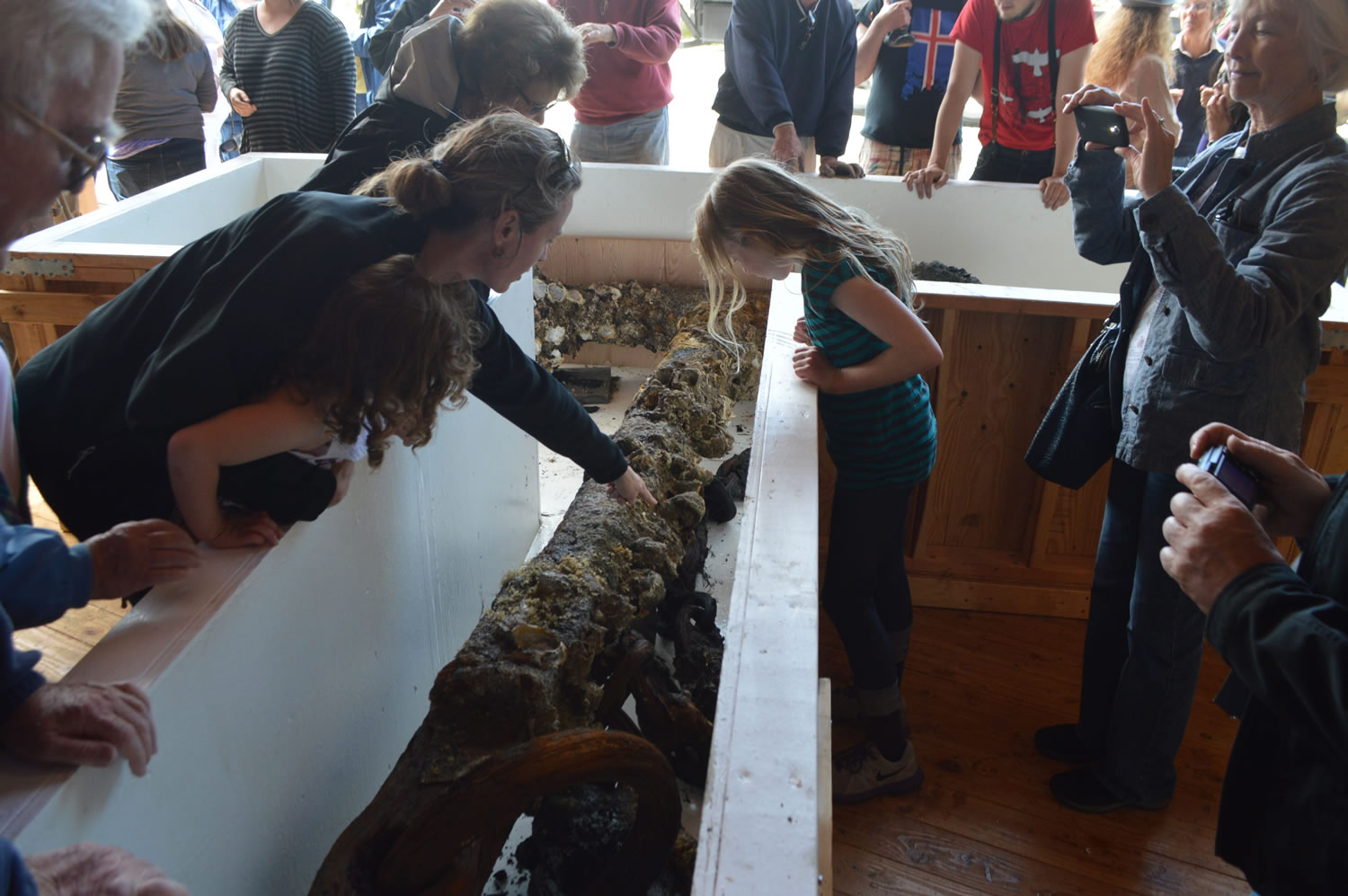SEATTLE — It rose from the deep off Washington’s Whidbey Island, at least 900 pounds of dripping metal that a group of amateur sleuths hope will forever change the history of Puget Sound.
A crane on Monday hauled up a lost ship’s anchor that a group of history buffs believe is the only surviving relic of Capt. George Vancouver’s famed 1792 voyage into Puget Sound.
Six years after sea-cucumber diver Doug Monk stumbled onto the barnacle-encrusted anchor, divers dug a trench below the buried artifact, strapped it to a T-shaped support and began to raise it from the bottom with floats. After some trouble getting the tipof the anchor unstuck, it was then hoisted by crane to a barge.
The anchor’s return to the surface was greeted by hoots and cheers from people on a small armada of boats. They were mostly friends and family of Monk and Scott Grimm, who spent years trying to prove that the unassuming hulk could only have come from one of the smaller ships that accompanied explorer Vancouver’s vessel, HMS Discovery.
That ship, the armed tender HMS Chatham, lost its anchor 222 years ago.
“For me, I’m a Northwest guy and my family has been here since the 1880s,” said Grimm. “The Chatham is our link to our past. My mom used to always say stuff isn’t just stuff. It ties generations together.”
The effort to raise the buried iron anchor took divers and salvage crews most of Monday. They battled waves and wind, and the anchor itself was lodged so firmly in the rock that it snapped a line being used to wrest it free.
But when it finally came up and dangled in the air, Monk said he could feel a weight actually being lifted.
“It was as tough to bring up as it’s been all along,” Monk said.
While most historians have long believed the Chatham’s anchor was lost somewhere in Bellingham Channel, Grimm studied explorers’ journals, court records and other documents from centuries ago and concluded the anchor off Whidbey Island most likely had to be from that ship.
Although some local experts remain skeptical, Grimm has since convinced the National Ocean and Atmospheric Administration’s top archaeological expert that he might be right.
NOAA archaeologist James Delgado, who previously led mapping of the Titanic wreck site, has said Grimm and his colleagues “make a very compelling case.”
The problem is that simply retrieving the anchor may not ultimately solve the mystery.
Grimm and Monk plan to have the anchor stored for viewing for several weeks in Port Townsend. Then they will ship it to Texas A&M University, where researchers will spend roughly 18 months trying to restore the anchor and look for any signs that ultimately could prove or disprove Grimm’s theory.
But unless those experts find any identifying stamps or markers on the anchor, the evidence Grimm has compiled may be all there is.
“Unless we find something on there that says ‘Made in China,’ I’m not sure it’s going to answer all the questions,” Grimm said.
A month after Vancouver sailed into Puget Sound in May 1792, reaching all the way to where Olympia now stands, the 145 or so members of his expedition headed back north, bound for a bay west of Anacortes.
Along the way, beset by 5.5-knot currents, the Chatham’s anchor got lodged and broke free.
Explorers’ journals suggested the Chatham and the Discovery were together at the time, but Grimm posited that the smaller, 80-foot Chatham had actually lagged way behind.
He determined that the bluffs off Whidbey more accurately fit the terrain described in the journals. He also checked with weather experts at NOAA, who figured out that currents in Admiralty Bay were 5.5 knots on June 9, 1792, and weren’t anywhere near that fast in Bellingham Channel.
Grimm knows it’s possible that he could still be wrong. But at this point, he feels one of the best pieces of evidence is the fact that armchair historians have scoured Bellingham Channel for decades and still haven’t found a thing.
“I think we’ll finally be vindicated,” Grimm said. “At least I hope we will.”



